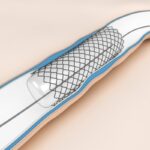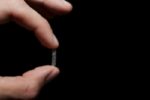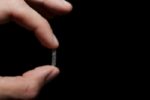Original: Direct drug-eluting Stenting to reduce stent reestenosis (STRESSED). Reference: Wouter S. Remkes et al. J Am Coll Cardiol Intv, 2014;7: 751-8. Direct stenting, without predilation, has been considered a safe and effective technique that reduces procedural time, radiation exposure, contrast material and costs; however, the pertinent studies tested conventional stents only. This study aimed at assessing whether<a href="https://solaci.org/en/2014/08/26/direct-implantation-of-drug-eluting-stents-does-not-reduce-restenosis/" title="Read more" >...</a>
Malapposition in drug-eluting stents. Much more common and much less serious than we thought
Original title: Incidences, Predictors, and Clinical Outcomes of Acute and Late Stent Malapposition Detected by Optical Coherence Tomography After Drug-Eluting Stent Implantation Reference: Im E. et al. CircCardiovascInterv. 2014 Jan 14. [Epubahead of print] This paper analyzed the imaging of 351 patients by optical coherence tomography (OCT) who received drug-eluting stents over 356 lesions between 2009 and<a href="https://solaci.org/en/2014/01/28/malapposition-in-drug-eluting-stents-much-more-common-and-much-less-serious-than-we-thought/" title="Read more" >...</a>
Primary angioplasty with 2nd generation drug-eluting stents
Original title: Stent thrombosis with second-generation drug-eluting stents compared with bare-metal stents: Network meta-analysis of primary percutaneous coronary intervention trials in ST-segment–elevation myocardial infarction. Reference: Circ Cardiovasc Interv. 2013; Epub ahead of print. To compare the safety and efficacy of 2nd generation drug-eluting stents (DES) versus bare metal stents (BMS) in the context of primary angioplasty was conducted<a href="https://solaci.org/en/2013/12/10/primary-angioplasty-with-2nd-generation-drug-eluting-stents/" title="Read more" >...</a>
Similar results of drug-eluting stents with biodegradable polymer versus permanent
Original title: Biodegradable Polymer Biolimus-Eluting Stent Versus Durable Polymer Everolimus-Eluting StentA Randomized, Controlled, Noninferiority Trial.NEXT trial. Reference: Masahiro Natsuaki et al. J Am CollCardiol 2013;62:181–90. Drug-eluting stents with biodegradable polymer were designed to counteract the long-term adverse effects on the vascular wall of permanent polymer. This prospective, multicenter, randomized, non-inferiority design study, compared the biolimus eluting stent with<a href="https://solaci.org/en/2013/11/15/similar-results-of-drug-eluting-stents-with-biodegradable-polymer-versus-permanent/" title="Read more" >...</a>
2nd generation drug-eluting stents intended for left main coronary artery
Original title: Zotarolimus- versus Everolimus-Eluting Stents for Unprotected Left Main Coronary Artery Disease. ISAR-LEFT MAIN 2 Study. Reference: Julinda Mehilli et al. J Am Coll Cardiol, article in press. Improvements in 2nd generation drug-eluting stents led to increased efficiency and safety , however there is little information on these new platforms to treat left main coronary artery .<a href="https://solaci.org/en/2013/08/29/2nd-generation-drug-eluting-stents-intended-for-left-main-coronary-artery/" title="Read more" >...</a>
Safety and superior effectiveness over two years in femoropopliteal region with drug-eluting stents
Original title: Sustained safety and effectiveness of paclitaxel-eluting stents for femoropopliteal lesions: two-year follow-up from the Zilver PTX randomized and single-arm clinical studies. Reference: Michael D. Dake et al. J Am Coll Cardiol 2013. Article in press. Studies with long-term monitoring showed mainly the limited permeability of balloon angioplasty, especially over challenging injuries such as total occlusions or<a href="https://solaci.org/en/2013/05/13/safety-and-superior-effectiveness-over-two-years-in-femoropopliteal-region-with-drug-eluting-stents/" title="Read more" >...</a>
In diabetic patients, Everolimus eluting stents could perform better than Paclitaxel eluting stents
Original title: Safety and Efficacy of Everolimus-Eluting Stents Versus Paclitaxel-Eluting Stents in a Diabetic Population Reference: Ana Laynez et, al. Catheterization and Cardiovascular Intervention 81:759-765 (2013) Everolimus eluting stents have already been compared with paclitaxel eluting stents in the general population, and they have proved to perform best, especially as regards revascularization and in-stent thrombosis. However, these data<a href="https://solaci.org/en/2013/04/09/in-diabetic-patients-everolimus-eluting-stents-could-perform-better-than-paclitaxel-eluting-stents/" title="Read more" >...</a>
Bioresorbable stents produce more occlusion of the small side branches
Original title: Incidence and Short-Term Clinical Outcomes of Small Side Branch Occlusion Alter Implantation of an Everolimus-Eluting Bioresorbable Vascular Scaffold Reference: Takashi Muramatsu et al. J Am Coll Cardiol Intv 2013;6:247–57. Small Side Branch Occlusion (SBO) during coronary angioplasty has been associated with periprocedural infarction. Among the factors that cause SBO are carina displacement, plaque displacement and artery<a href="https://solaci.org/en/2013/04/04/bioresorbable-stents-produce-more-occlusion-of-the-small-side-branches/" title="Read more" >...</a>
It takes more patience to implant stents.
Original title: Duration of Balloon Inflation for Optimal Stent Deployment: Five Seconds Is Not Enough. Reference: Thomas Hovasse et al. Catheterization and Cardiovascular Interventions 81:446–453 (2013). Adequate stent expansion and apposition to the vessel wall is essential to optimize the results of percutaneous transluminal coronary angioplasty (PTCA). If the above is not adequate, it increases the risk of<a href="https://solaci.org/en/2013/02/22/it-takes-more-patience-to-implant-stents/" title="Read more" >...</a>
Self-expanding stents improve positioning in primary angioplasty
Original title: Self-Expanding Versus Balloon-Expandable Stents in Acute Myocardial Infarction: Results From the APPOSITION II Study Reference: Robert-Jan van Geuns et al. J Am Coll Cardiol Intv 2012;5:1209–19 Acute myocardial infarction is associated with vasoconstriction and thrombus occlusion. Resolution of these two points during the first hours after primary angioplasty can lead to poor extension and poor positioning<a href="https://solaci.org/en/2012/12/21/self-expanding-stents-improve-positioning-in-primary-angioplasty/" title="Read more" >...</a>









